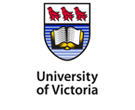Social and environmental accounting: The Expanded Value Added Statement
| Title | Social and environmental accounting: The Expanded Value Added Statement |
| Publication Type | Thesis |
| Year of Publication | 2007 |
| Authors | Mook LI |
| Advisor | Quarter J |
| Academic Department | Adult Education and Counselling Psychology |
| Degree | Doctor of Philosophy Ph.D. |
| Number of Pages | 191 |
| University | University of Toronto (Canada) |
| City | Toronto, ON |
| Accession Number | AAT NR39955 |
| Keywords | Environmental accounting, Expanded Value Added Statement, Nonprofit, Social accounting, Sustainability |
| Abstract | The Expanded Value Added Statement (EVAS) makes a significant contribution to the field of accounting by highlighting hitherto invisible dimensions and integrating them into a single accounting statement. This, in turn, helps to tell a much richer performance story of organizations and opens up new possibilities for organizational and social change. The EVAS recognizes established traditions in the field of accounting, but at the same time pushes the envelope aiming at viable changes in accounting practices that nurture a more sustainable society. It provides a considerable advance in social accounting by integrating economic, social and environmental factors in a format that is applicable to different organization types, time dimensions, and contexts.The EVAS has four main influences: mainstream accounting, critical accounting, social accounting, and sustainability. Mainstream accounting, particularly the progressive practice of value added accounting, highlights the wealth created (or destroyed) and distributed through the results of labour and capital in transforming external goods and services. Critical accounting contributed with two insights: that accounting is not a neutral activity, and that accounting practices are shaped by and can in turn can shape social reality. Social accounting, especially the subfield of integrated social accounting, has provided a significant precedent for the EVAS by broadening the range of items included in accounting statements to take into account externalities. Finally, the concept of sustainability provided the conceptual and normative framework that guided the selection of variables included in the EVAS.In this manuscript-based dissertation, the EVAS is applied to three case studies. The first looked at the value added of volunteer work and un-reimbursed out-of-pocket expenses in ARNOVA, a non-profit scholarly association. The second case study, a construct of 33 sustainable buildings in the USA, shows the costs and benefits of building in sustainable ways versus using traditional building techniques. The third case, based on a master-planned community in Vancouver, includes an economically targeted investment, a non-profit community police centre, a non-profit neighbourhood house, and municipal government agencies, and shows how the EVAS can integrate economic, social and environmental impacts and help to make investment decisions that support sustainability. |
| URL | <u>http://proquest .umi .com/pqdweb ?did=1557623141 sid=3 Fmt=2 clientId=3916 RQT=309 VName=PQD</u> |


 The Social Economy Student Network
The Social Economy Student Network


